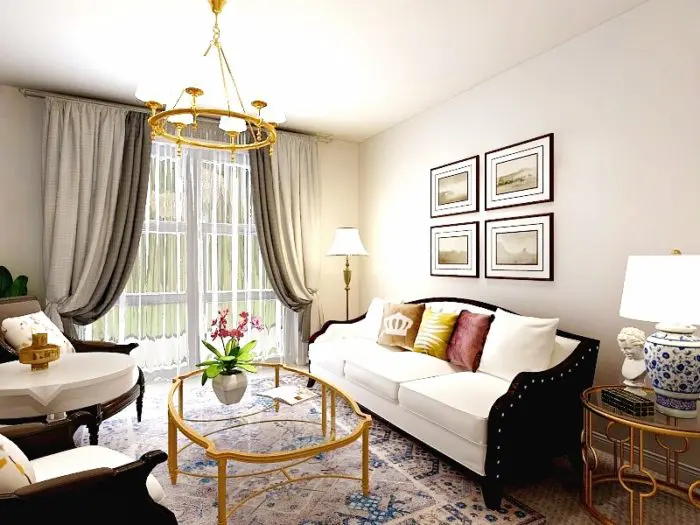Curtains add a touch of elegance, warmth, and softness to a room, becoming an integral part of the room’s architecture. As an interior designer, I understand how curtains relate to interiors. Below is what I have learned:

- Day and Night Dynamics: Consider curtains for both aesthetics and functionality. While a stunning view might negate the need during the day, curtains offer privacy and warmth at night.
- Architectural Tips:
- For arched windows, ignore the arch and take curtains up to the ceiling on either side.
- Deep-set windows pair well with blinds or shutters and side dress curtains.
- French windows look better without pelmets.
- Skylights and clerestories benefit from custom-built blinds.
- Dormers and circular windows are best left bare, unless privacy is an issue.
- Proper Hanging Technique:
- Curtains should hang from under the cornice or the ceiling in a modern home, all the way down to the floor.
- Measure curtains to be at least twice the width of the window, with a maximum of three times. Lighter fabrics require more material.
- Budget-Friendly Refresh:
- Add a contrasting fabric border to refresh existing curtains.
- Introduce a sheer on a separate track or pole for a new atmosphere.
- Rejuvenate a plain blind with a pair of store-bought curtain on the side.
- Material Matters: Generous curtains made from budget-friendly fabric often look better than mean-looking curtains made from expensive material.
- Illusions with Curtains:
- Curtains can compensate for architectural mistakes and create an illusion of grandeur or simplicity.
- Taking curtains as high as possible provides visual height and draws attention to the ceiling.
- Patterned Curtain Tips: Be mindful of how patterned curtains gather; they should maintain their essence even when pulled back.
Remember, curtains are not just coverings; they are a means to elevate your space, adding style, warmth, and a touch of luxury.
